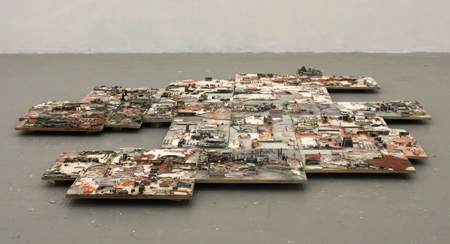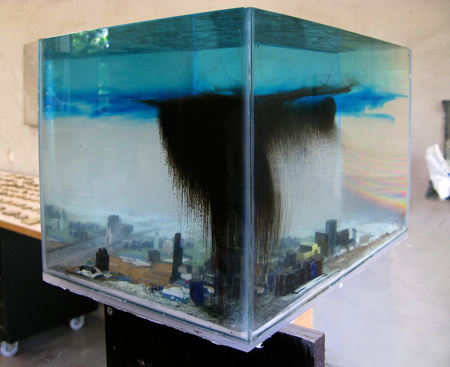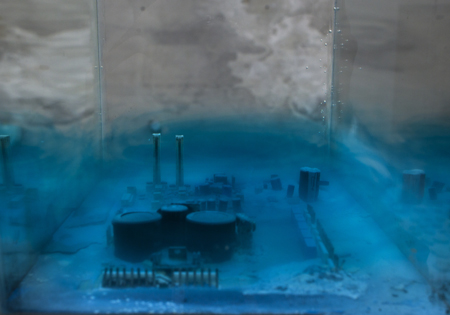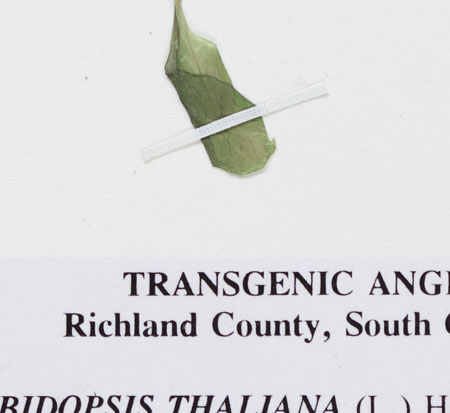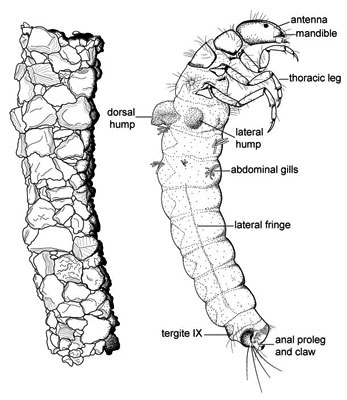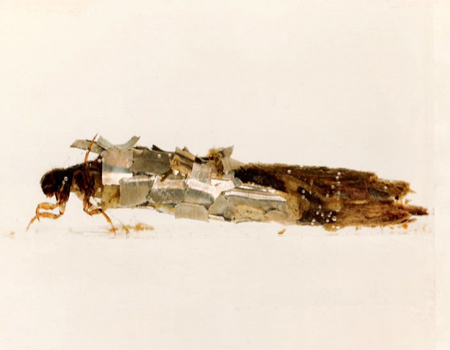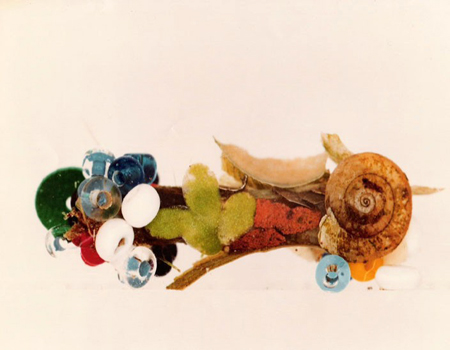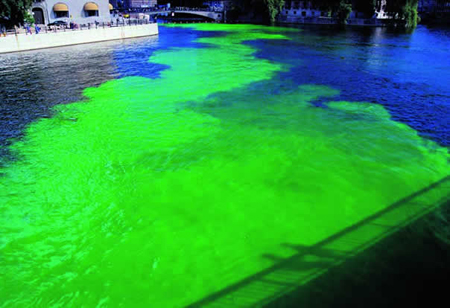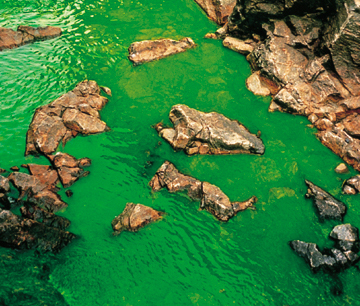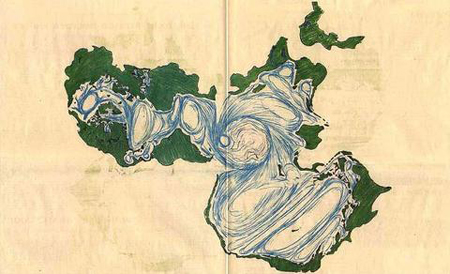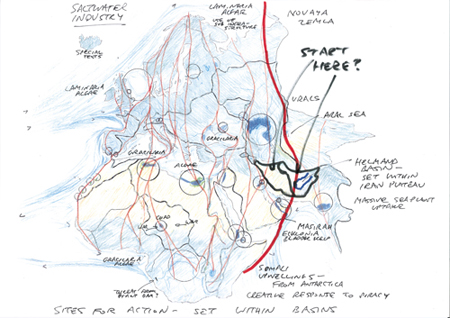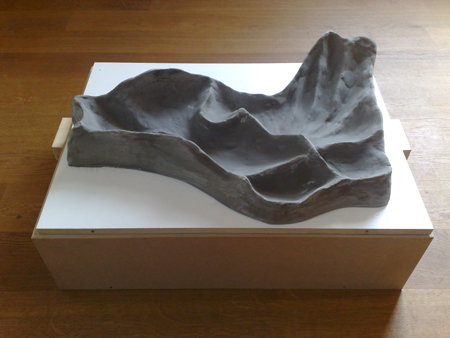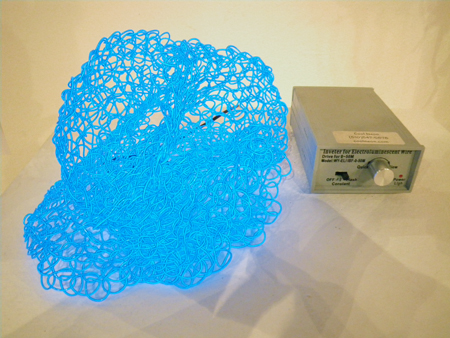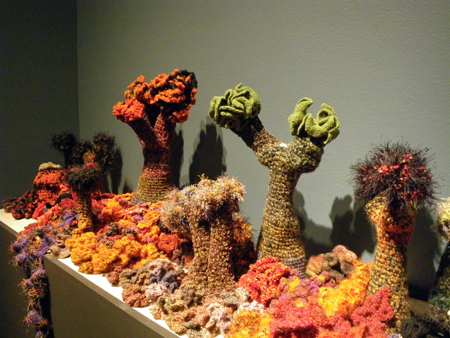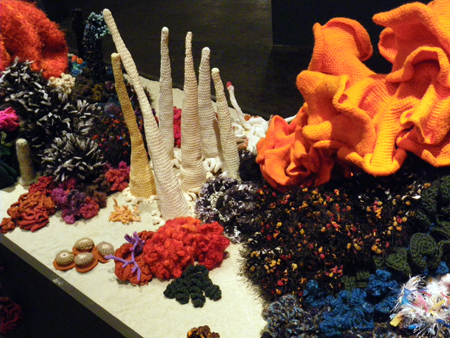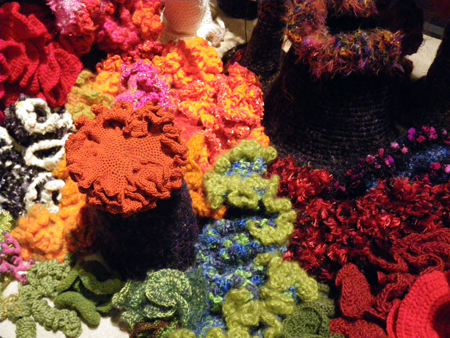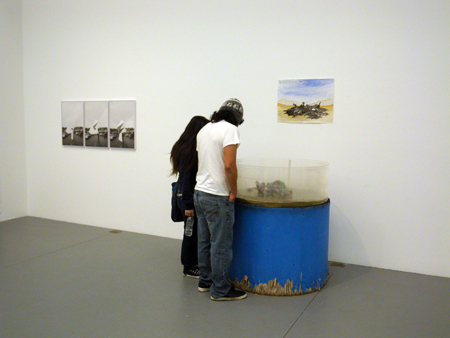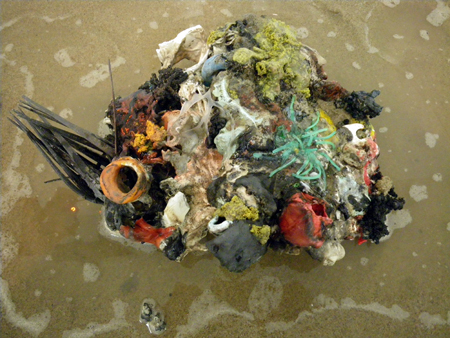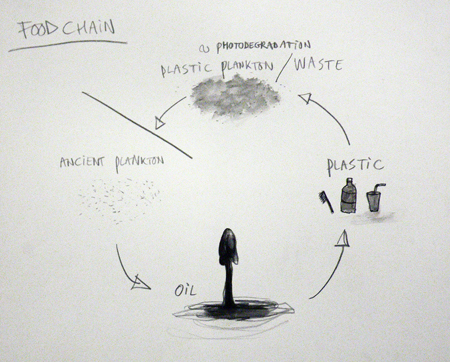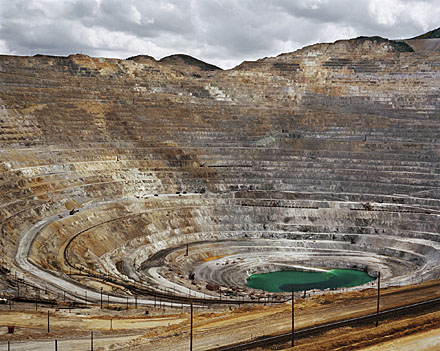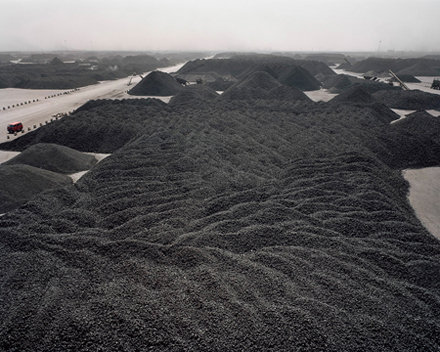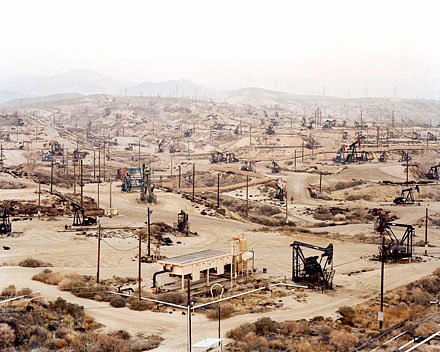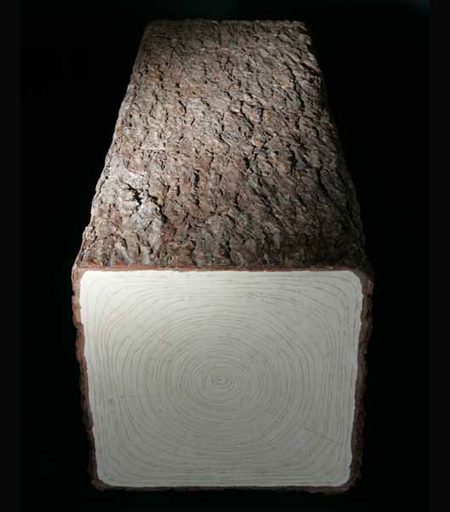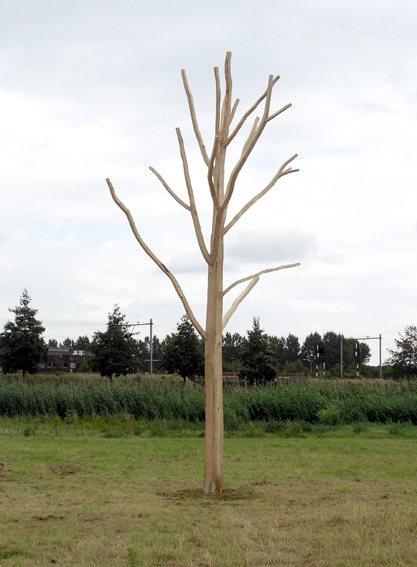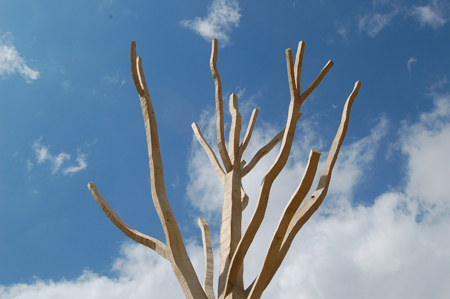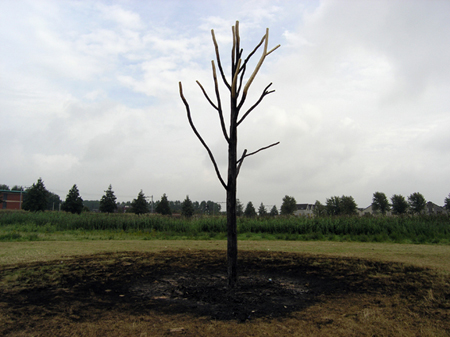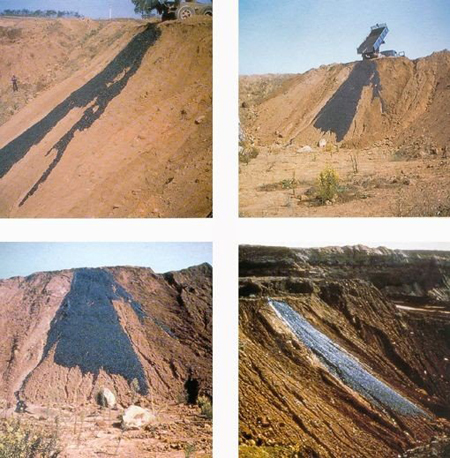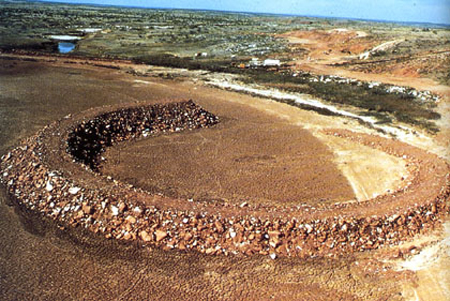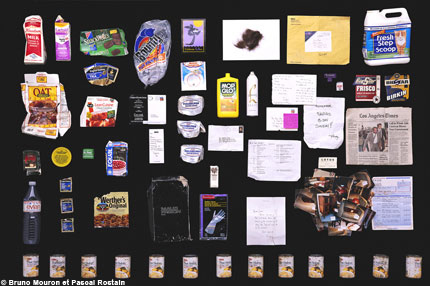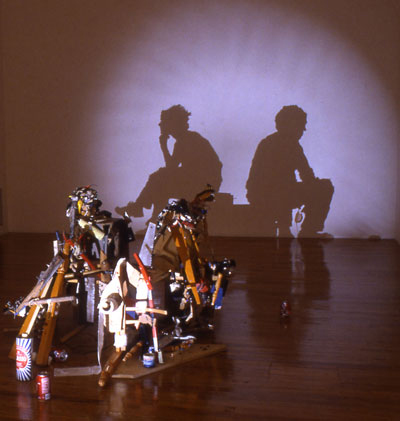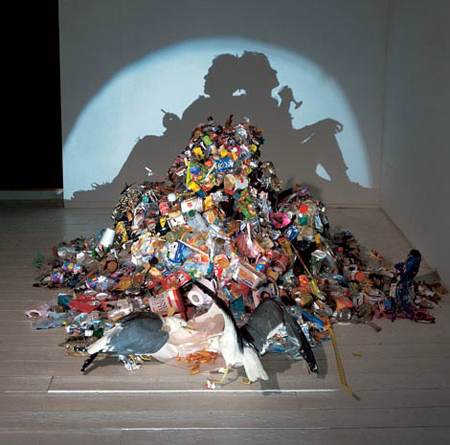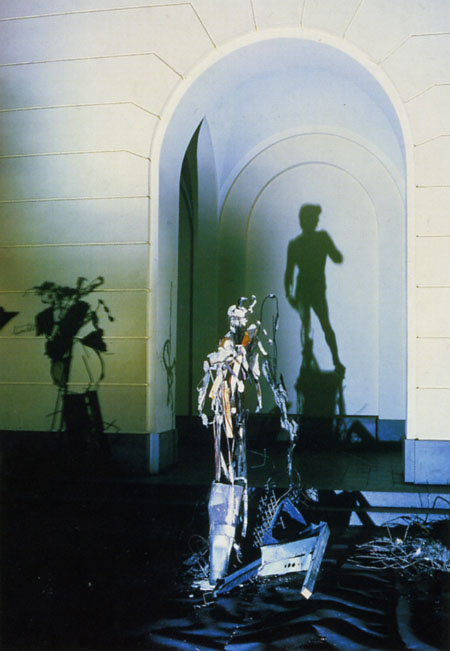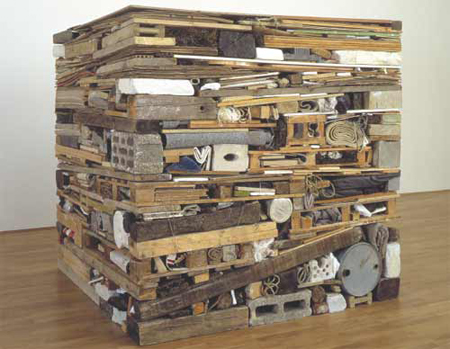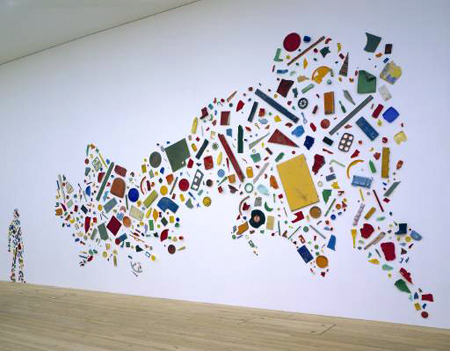Anthropogenic Plastiglomerates
juni 9th, 2014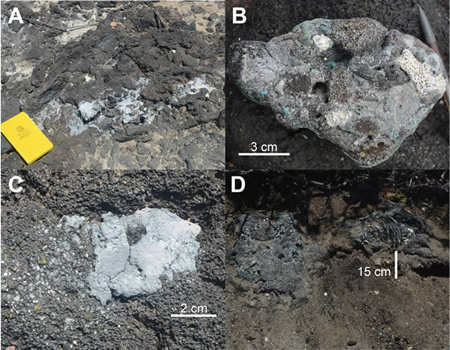
Characteristics of the two types of plastiglomerate. (A) In situ plastiglomerate wherein molten plastic is adhered to the surface of a basalt flow. Field book is 18 cm long. (B) Clastic plastiglomerate containing molten plastic and basalt and coral fragments. (C) Plastic amygdales in a basalt flow. (D) Large in situ plastiglomerate fragment. Adhered molten plastic was found 15 cm below the surface. Note the protected vegetated location.
Recognition of increasing plastic debris pollution over the last several decades has led to investigations of the imminent dangers posed to marine organisms and their ecosystems, but very little is known about the preservation potential of plastics in the rock record. As anthropogenically derived materials, plastics are astonishingly abundant in oceans, seas, and lakes, where they accumulate at or near the water surface, on lake and ocean bottoms, and along shorelines. The burial potential of plastic debris is chiefly dependent on the material’s density and abundance, in addition to the depositional environment. On Kamilo Beach on the island of Hawaii a new “stone” formed through intermingling of melted plastic, beach sediment, basaltic lava fragments, and organic debris. The material, herein referred to as “plastiglomerate,” is divided into in situ and clastic types that were distributed over all areas of the beach. Agglutination of natural sediments to melted plastic during campfire burning has increased the overall density of plastiglomerate, which inhibits transport by wind or water, thereby increasing the potential for burial and subsequent preservation. This anthropogenically influenced material has great potential to form a marker horizon of human pollution, signaling the occurrence of the informal Anthropocene epoch.
According to the geologic timescale, we are currently living in the Holocene epoch. However, Crutzen and Stoermer proposed the term “Anthropocene” in the year 2000 A.D. to represent the period of time between the latter half of the 18th century and the present day. Although other workers have considered the onset of this informal epoch to have occurred at slightly different times, researchers agree that the Anthropocene is a time span marked by human interaction with Earth’s biophysical system. Geological evidence used in supporting this assertion comes from Holocene ice cores and soil profiles. For example, methane concentrations measured in ice cores display an increase of CH4, which contrasts with the expected decline in CH4 at that time, based on the orbital-monsoon cycle theory. Ruddiman and Thomson propose in 2001 A.D. that this anomalous rise in CH4 can be linked to early agricultural practices in Eurasia. In addition, an increase in atmospheric CO2, as determined from ice cores, was explained by Ruddiman in 2003 as a result of early forest clearance.
Atmospheric compositions and soil management practices are only two indicators of anthropogenic activity, but relatively few examples of solid, human-made materials are preserved in the sediment record. Even rarer are items that are correlatable on a global scale. Given the ubiquity of non-degradable plastic debris on our planet, the possibility of their global preservation is strong. This study presents the first rock type composed partially of plastic material that has strong potential to act as a global marker horizon in the Anthropocene.
Based on a text by Patricia L. Corcoran, Charles J. Moore, Kelly Jazvac
Published in The Geological Society of America.

